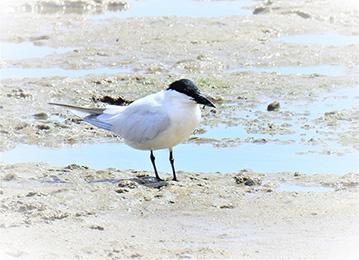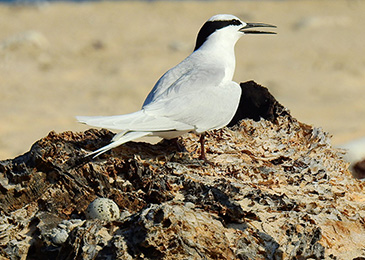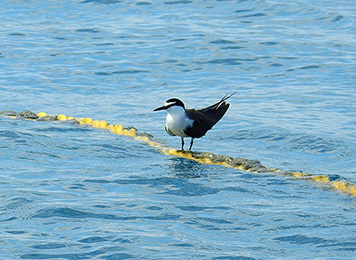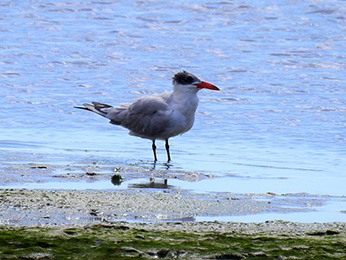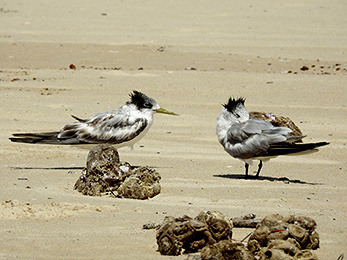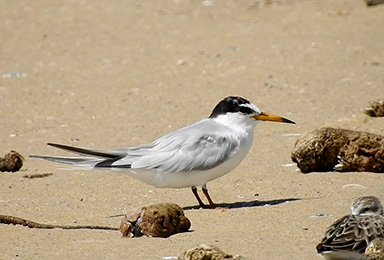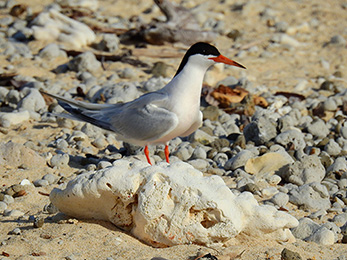TERNS IN AUSTRALIA
These avian wonders are not just any birds; they are master navigators of the skies and seas, playing a crucial role in the delicate balance of marine ecosystems.
Terns are sleek, medium-sized birds, with slender bodies that seem perfectly designed for a life spent mostly in the air or by the sea. Their wings are long and pointed, cutting through the air with grace and precision, while their tails, often forked, assist in their agile flight maneuvers. The plumage of Terns is predominantly a crisp white, accented with shades of grey or black, particularly on their caps and wings. This elegant attire not only adds to their visual appeal but serves as camouflage against predators and aids in their hunting prowess.
One of the most fascinating aspects of Terns is their remarkable fishing technique. They are consummate hunters, patrolling the skies with keen eyes, searching for signs of fish just below the water’s surface. With a sudden, streamlined dive, they plunge into the water, emerging moments later with their catch. This display of precision and agility is a testament to their adaptation to a life intertwined with the sea.
Terns are also known for their incredible migratory journeys, with some species traveling thousands of kilometers across oceans to breed or feed. These journeys are a stark reminder of the interconnectedness of ecosystems and the importance of conserving marine habitats not just locally but globally.
The life of Terns is cyclical, with the changing seasons dictating their movements, breeding, and feeding patterns. During breeding season, Terns gather in colonies on beaches, islands, or coastal wetlands, where they engage in elaborate courtship displays and work together to raise their young. The sight and sound of a Tern colony is a vivid spectacle, filled with the cacophony of calls and the constant movement of birds as they defend their nests, court mates, or feed their chicks.
Yet, the serene beauty and remarkable life of Terns are under threat. Human activities, climate change, and habitat destruction pose significant challenges to their survival. The preservation of their habitats, from the sandy beaches where they nest to the vast oceans they traverse, is crucial for their continued existence.

